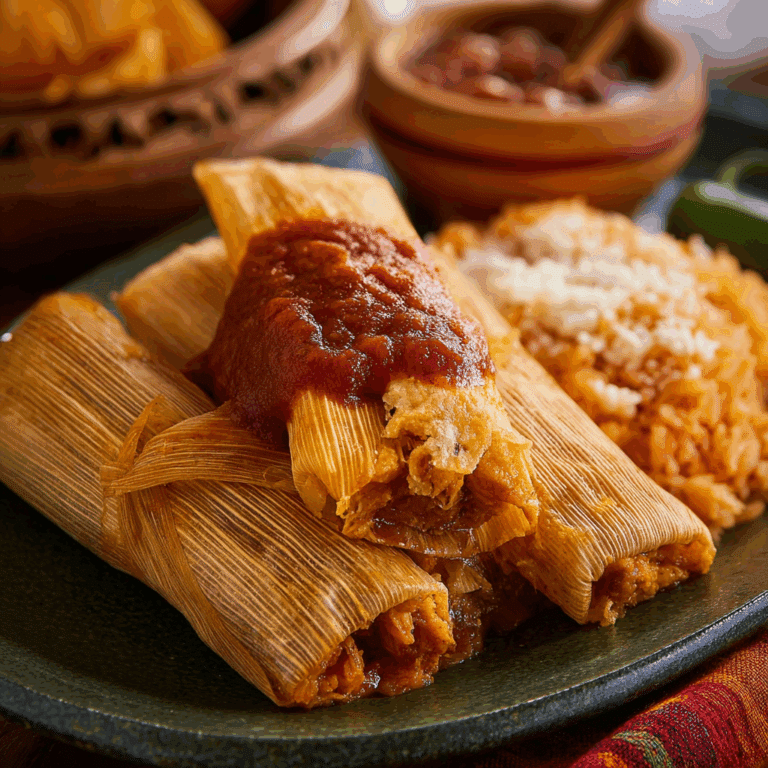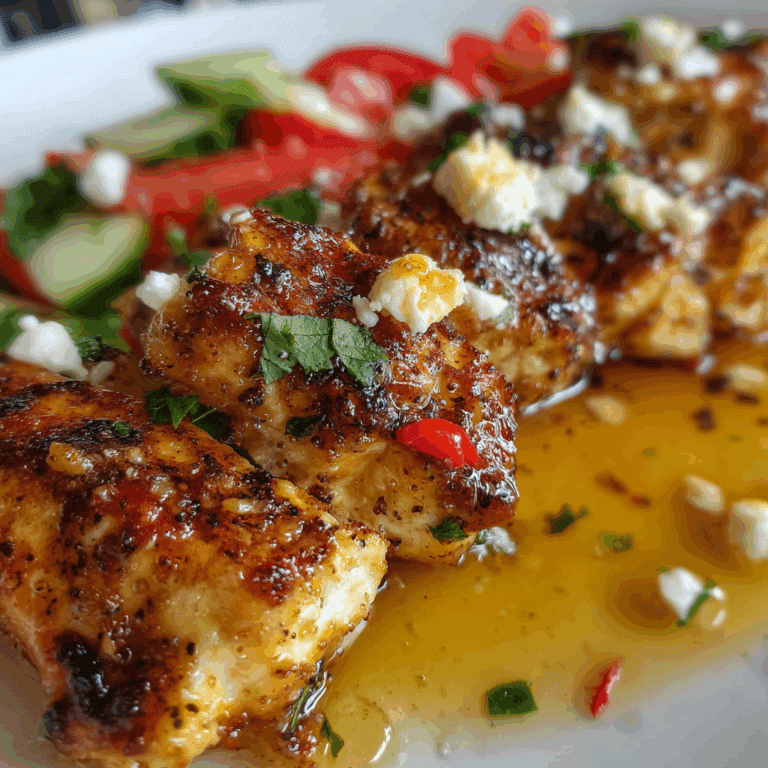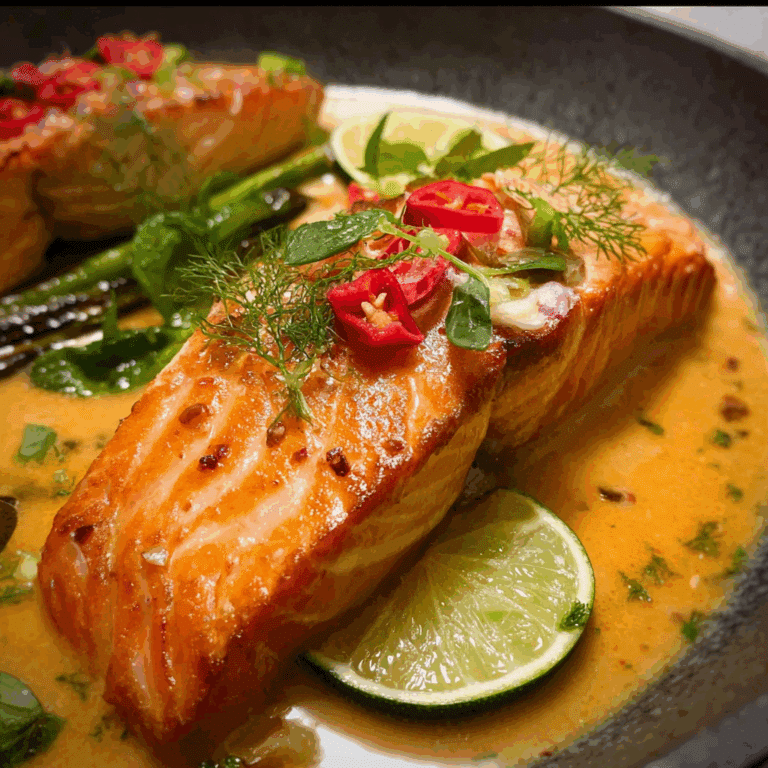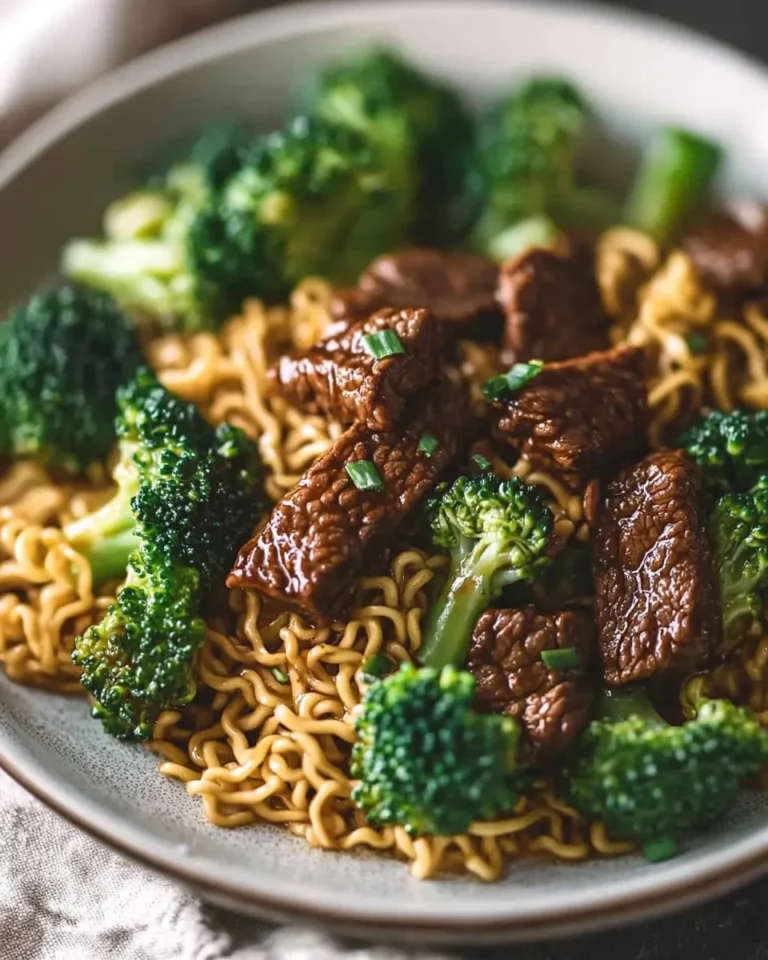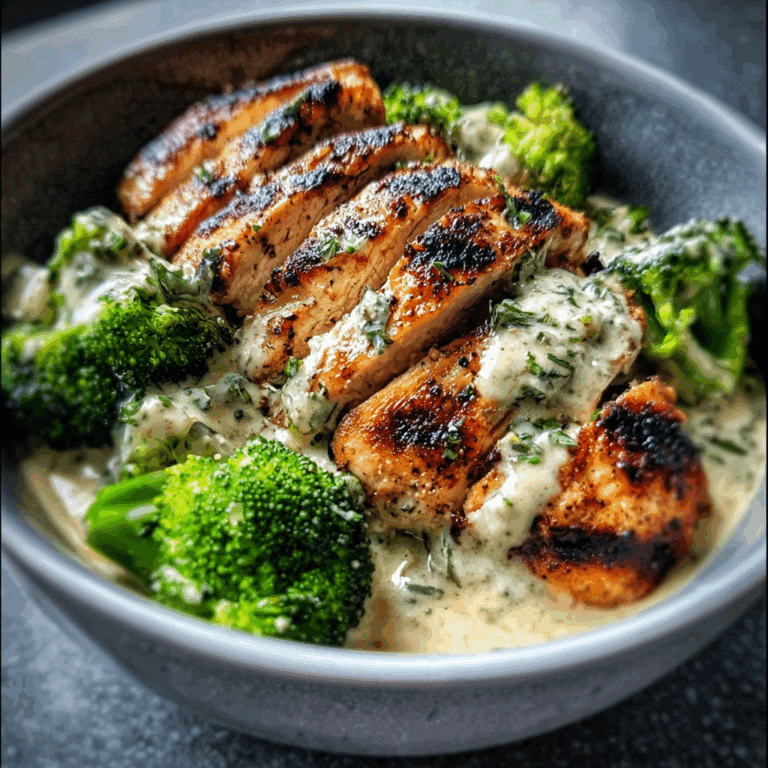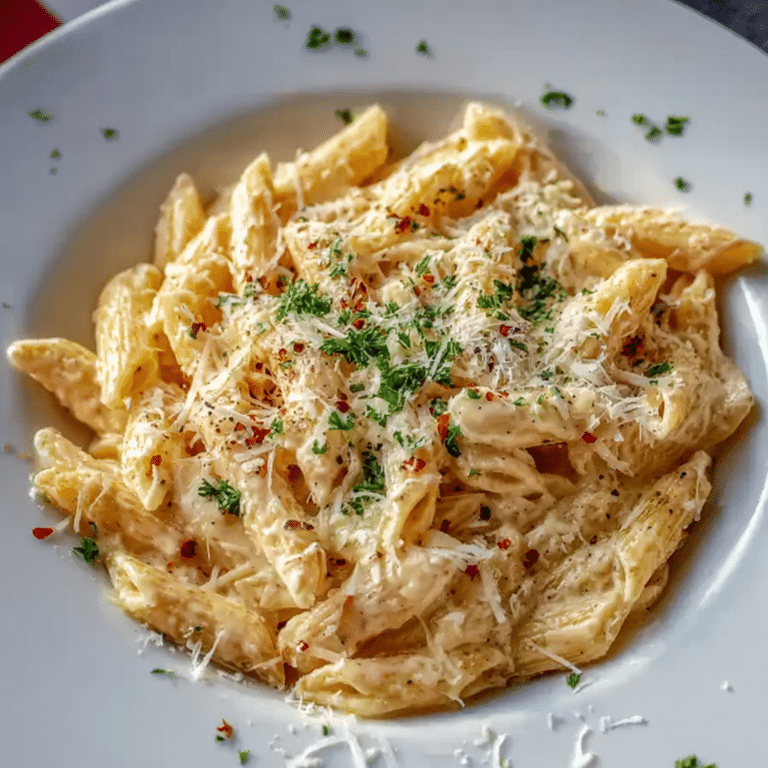How to Make the Perfect Prime Rib Recipe
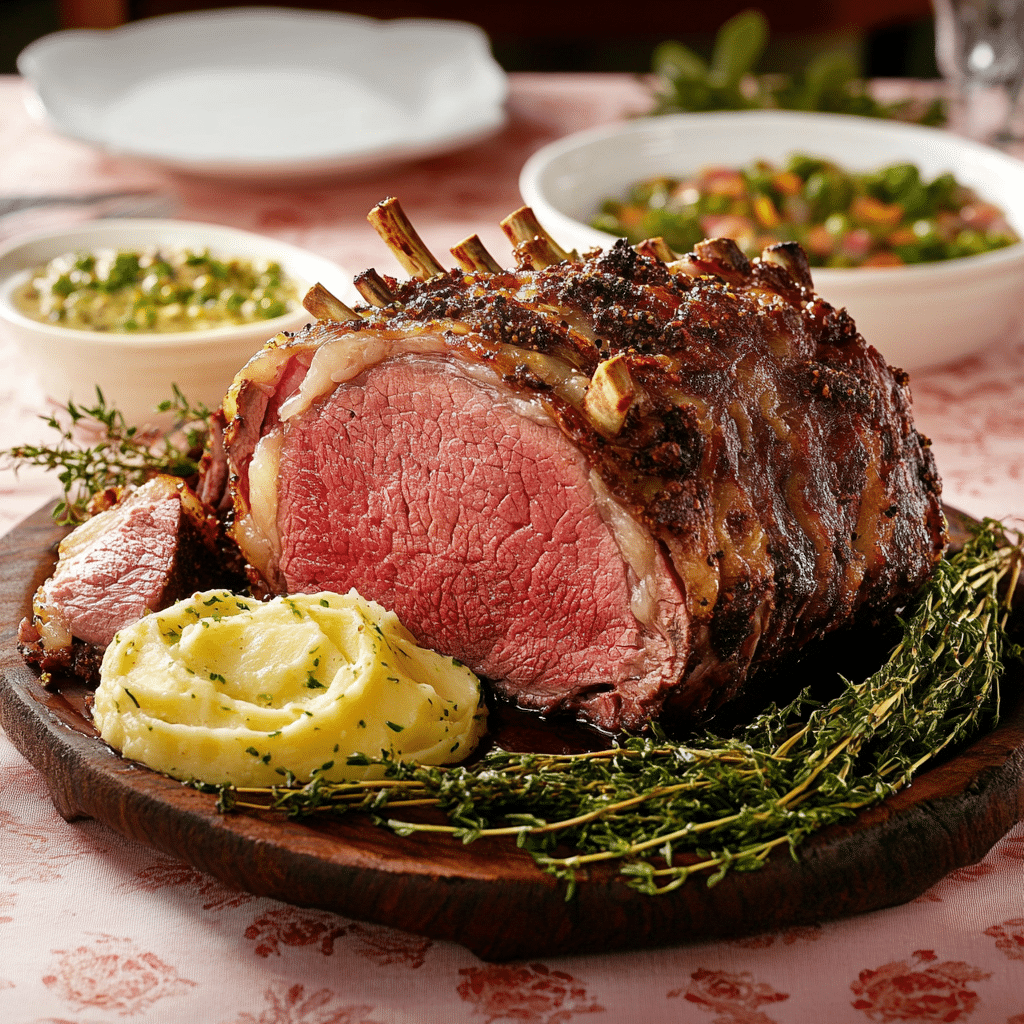
If you’re dreaming of a dinner that’s juicy, tender, and packed with rich, mouthwatering flavor, this Prime Rib Recipe is exactly what you need. Perfect for special occasions or an elegant dinner party, this recipe walks you through creating an unforgettable roast that will have everyone asking for seconds. With simple ingredients and straightforward steps, you’ll achieve a prime rib that’s beautifully crusted on the outside and pink and juicy inside every single time.
Why You’ll Love This Recipe
- Ultimate tenderness: Slow roasting ensures the meat stays juicy and soft, melting in your mouth.
- Bold, robust flavors: A simple seasoning blend enhances the natural beef flavor without overpowering it.
- Impressive presentation: This roast looks stunning on the table and makes any event feel extra special.
- Easy to follow: Even if you’re new to roasting, the step-by-step process is beginner-friendly.
- Versatile meal: Perfect alone or with a variety of side dishes to customize your feast.
Ingredients You’ll Need
The beauty of this Prime Rib Recipe lies in its simplicity. With just a handful of essential ingredients, each one plays a crucial role in building that rich taste, enticing aroma, and perfect crust that defines prime rib perfection.
- Prime rib roast (bone-in): Choose a high-quality cut for maximum flavor and moisture retention.
- Kosher salt: Coarse salt penetrates the meat, enhancing natural flavors and creating a savory crust.
- Freshly ground black pepper: Adds a sharp, fragrant kick that balances the richness of the beef.
- Garlic cloves: Fresh garlic infuses the roast with a warm, aromatic depth.
- Fresh rosemary or thyme: These herbs lend an earthy, woodsy note that complements the meat perfectly.
- Olive oil: Helps the seasonings stick to the roast and promotes the browning process.
Variations for Prime Rib Recipe
This Prime Rib Recipe is wonderfully adaptable, making it easy to tailor to your taste preferences or dietary needs. Feel free to experiment with these variations to make it your own signature dish.
- Herb butter crust: Mix softened butter with garlic and herbs, then spread over the roast for a rich, flavorful crust.
- Spicy twist: Add cayenne pepper or smoked paprika to the seasoning mix for a touch of heat.
- Wine marinade: Marinate the roast in red wine with garlic and herbs overnight for added depth.
- Gluten-free option: This recipe is naturally gluten-free, but double-check seasoning packets to be certain.
- Low-sodium modification: Use less salt or a salt substitute if watching your sodium intake.

How to Make Prime Rib Recipe
Step 1: Prep the Roast
Remove the prime rib from the refrigerator at least an hour before cooking to let it reach room temperature. This helps it cook evenly. Pat the roast dry with paper towels to ensure a nice crust.
Step 2: Season Generously
Rub olive oil all over the roast to help the seasonings adhere. Then coat it evenly with kosher salt, freshly ground black pepper, minced garlic, and chopped rosemary or thyme. Don’t be shy—seasoning is key to flavor.
Step 3: Preheat the Oven and Start Roasting
Preheat your oven to a high temperature, around 450°F (230°C). Place the roast on a rack in a roasting pan, fat side up, and insert a meat thermometer into the thickest part. Roast it at this high heat for the first 20 minutes to create a beautiful sear.
Step 4: Lower the Heat and Continue Cooking
After the initial sear, reduce the oven temperature to 325°F (165°C). Continue roasting until the thermometer reads your desired level of doneness—125°F (52°C) for rare, 135°F (57°C) for medium-rare, or 145°F (63°C) for medium.
Step 5: Rest the Meat
Once out of the oven, tent the roast with foil and let it rest for at least 20 minutes. This allows the juices to redistribute, ensuring every slice stays juicy and tender.
Pro Tips for Making Prime Rib Recipe
- Room temperature roast: Letting the meat sit out beforehand helps it cook more evenly from edge to center.
- Use a meat thermometer: This is the best way to achieve perfect doneness without overcooking.
- Don’t skip resting: Resting is crucial to locking in the juices and keeping the meat moist.
- Invest in quality meat: The roast quality directly impacts flavor and tenderness, so choose well-marbled beef.
- Sear first, then slow roast: This combo creates a crispy crust while keeping the inside tender and juicy.
How to Serve Prime Rib Recipe
Garnishes
Fresh herbs like rosemary sprigs or thyme add an elegant touch and a fragrant boost. Serve with a dollop of horseradish cream or a drizzle of au jus sauce for enhanced flavor.
Side Dishes
Classic sides such as creamy mashed potatoes, roasted root vegetables, or a crisp green salad complement the richness of prime rib beautifully, balancing flavors and textures.
Creative Ways to Present
Slice the prime rib thinly and arrange it on a wooden platter surrounded by fresh herbs and roasted garlic bulbs for a rustic and inviting look that will wow your guests.
Make Ahead and Storage
Storing Leftovers
Wrap leftover prime rib tightly in foil or plastic wrap and store it in the refrigerator for up to 4 days to preserve flavor and moisture.
Freezing
If you want to save leftovers longer, slice the meat and package it in airtight containers or freezer bags. Frozen prime rib lasts up to 3 months while maintaining good quality.
Reheating
Reheat gently in a low oven (around 250°F or 120°C) with foil to prevent drying, or warm slices quickly in a covered skillet over low heat to keep tenderness intact.
FAQs
What temperature should I cook prime rib to?
For the juiciest results, aim for 125°F (52°C) for rare, 135°F (57°C) for medium-rare, or 145°F (63°C) for medium, measured with a meat thermometer.
Can I cook prime rib without a bone?
Yes, boneless prime rib can be used; it cooks faster and is easier to carve but may not have quite the same flavor intensity as bone-in cuts.
How long should I let prime rib rest?
Rest the roast for at least 20 minutes after cooking to let the juices redistribute, ensuring each slice is juicy and tender.
Is it necessary to sear the prime rib first?
Searing at a high temperature initially forms a flavorful crust that locks in juices and adds texture, so it’s highly recommended.
Can I prepare prime rib ahead of time?
You can season the roast the day before and refrigerate it uncovered; this dry brining enhances flavor and crust development.
Final Thoughts
This Prime Rib Recipe is a total crowd-pleaser that’s surprisingly easy to pull off. With its unbeatable flavor, gorgeous presentation, and tender texture, it’s sure to become your go-to for gatherings big or small. Give it a try and watch your dinner guests swoon over every bite!
Related Posts
- Best Macaroni and Cheese Recipes to Try Now
- Easy Sheet Pan Chicken Fajitas to Try Tonight
- Easy Turkey Burger Recipes for Every Meal
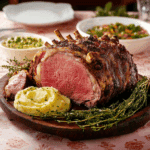
Prime Rib Recipe
- Total Time: 2 hours 45 minutes
- Yield: 6-8 servings 1x
- Diet: Gluten Free
Description
This Prime Rib Recipe delivers a juicy, tender, and flavorful roast perfect for special occasions or elegant dinners. Featuring a simple seasoning blend and slow roasting technique, it ensures a beautifully crusted exterior with a pink, juicy interior every time. Easy to follow and adaptable, this prime rib is sure to impress your guests and become a favorite centerpiece.
Ingredients
Prime Rib Roast
- 1 prime rib roast (bone-in), high-quality cut
Seasonings
- Kosher salt, coarse, as needed
- Freshly ground black pepper, as needed
- 4–6 garlic cloves, minced
- 2–3 tablespoons fresh rosemary or thyme, chopped
- 2–3 tablespoons olive oil
Instructions
- Prep the Roast: Remove the prime rib from the refrigerator at least one hour before cooking to bring it to room temperature. Pat dry thoroughly with paper towels to help achieve a nice crust.
- Season Generously: Rub olive oil evenly all over the roast to help seasonings adhere. Coat the roast thoroughly with kosher salt, freshly ground black pepper, minced garlic, and chopped rosemary or thyme to build flavor.
- Preheat the Oven and Start Roasting: Preheat your oven to 450°F (230°C). Place the roast on a rack in a roasting pan, fat side up. Insert a meat thermometer into the thickest part. Roast at high heat for 20 minutes to create a seared, flavorful crust.
- Lower the Heat and Continue Cooking: Reduce the oven temperature to 325°F (165°C). Continue roasting until the internal temperature reaches desired doneness: 125°F (52°C) for rare, 135°F (57°C) for medium-rare, or 145°F (63°C) for medium.
- Rest the Meat: Remove the roast from the oven and tent loosely with foil. Let it rest for at least 20 minutes to allow juices to redistribute, ensuring every slice stays juicy and tender.
Notes
- Letting the roast reach room temperature before cooking ensures even doneness from edge to center.
- Use a meat thermometer to accurately check internal temperature and avoid overcooking.
- Resting the meat after cooking is essential to lock in juices and maintain tenderness.
- Choose well-marbled, high-quality prime rib for optimal flavor and texture.
- Searing at high heat before slow roasting creates a delicious crust while keeping the inside tender and juicy.
- Prep Time: 1 hour 15 minutes
- Cook Time: 1 hour 30 minutes
- Category: Main Course
- Method: Roasting
- Cuisine: American
Nutrition
- Serving Size: 6 oz (170g)
- Calories: 450
- Sugar: 0g
- Sodium: 600mg
- Fat: 35g
- Saturated Fat: 15g
- Unsaturated Fat: 18g
- Trans Fat: 0g
- Carbohydrates: 1g
- Fiber: 0g
- Protein: 35g
- Cholesterol: 125mg
Keywords: prime rib, roast beef, holiday roast, slow roast, garlic, rosemary, tender beef, special occasion meal

